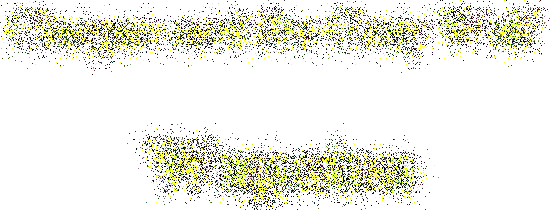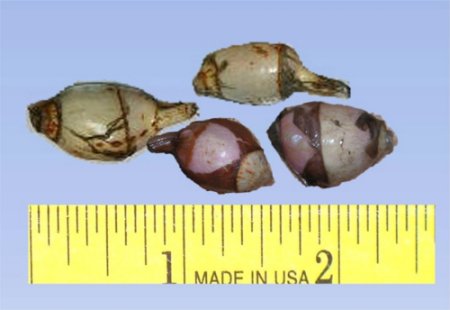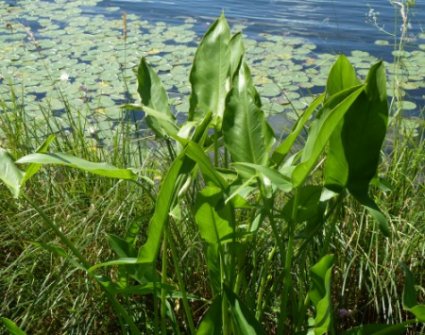


By now you know Kanti likes her wapatoo, but she isn't the only one. The tubers of this hardy aquatic plant were a staple for many North American Indians. The tubers stored well and were high in calories, an important factor in times when starvation was a frequent cause of death. Wapatoo is known by many names. The most common English names are Arrowhead, Indian Potato, and Duck Potato. Despite the name, the tubers are buried too deep in the muck for ducks to find, but that does not stop muskrats who, like Kanti, consider them a delicacy. Sometimes wapatoo is spelled with one o. Chogan and Kanti didn't have a written language, so they didn't worry about spelling. We now have a written interpretation of the Ojibway language, but not everyone can agree on spelling. Using two o's to represent a long o sound is a recent convention followed in this novel.
Broad-Leafed Wapatoo
A plant with so many names can be confusing. That is why botonists have agreed to give each type of plant one scientific name. They have given the broad-leafed wapatoo seen at the left the name Sagittaria latifolia. Sagittaria comes from Latin and means archer. As you can see from the picture, the leaves are shaped like arrowheads. There are about twenty different types of wapatoo and their scientific names all begin with Sagittaria.
Wapatoo Tubers

Wapatoo plants prefer sunny locations in shallow water where there is little current or waves. During the summer months the green chlorophyll in the leaves use solar energy to produce sugar. The sugar is then changed to starch and deposited in tubers attached to the plant's roots. The tubers continue to increase in size, and by the end of the summer they will look similar to the tubers in the picture at the right. Some people claim wapatoo tubers can get as large as hen's eggs. I have never seen tubers that large. Tubers the size of chestnuts or walnuts are more common. When spring comes, the plants use the energy stored in the tubers to jump-start growth.
Potato Rake
The best time to harvest wapatoo tubers is the end of the summer after the plants have stored all their sugar in the starchy tubers and before the plants use up the stored food to jump-start spring growth. Chogan and Kanti gather tubers using their toes. They work their feet into the muck at the base of the plant until their toes free up the tubers. The tubers then float to the surface where Chogan and Kanti can scoop them up. Sometimes the tubers extend out one or two feet from the base of the plant.
Those of us who detest muck oozing between our toes can still gather wapatoo tubers using a stick to pry them from the muck or better yet, a potato rake like the one at the left. Chogan and Kanti often eat the tubers raw, although Chogan finds raw tubers a little too bitter for his taste. He prefers them boiled or roasted, which enhances the flavor.
Arrow Arum

You should never eat a wild plant unless you are positive of its identity. Many plants are similar in appearance, but some of them are poisonous. The Arrow Arum at the right with the scientific name of Peltandra virginica has a pointed tip and two pointed lobes at the base similar to wapatoo, but the plant is toxic and can cause severe stomach cramps if eaten. Fortunately, it does not form tubers. The veins of the Arrow Arum leaf radiate out from a large central vein that extends from the stem to the tip of the leaf. Each vein of a wapatoo leaf radiates out from the stem like spokes on a wagon wheel.
Return